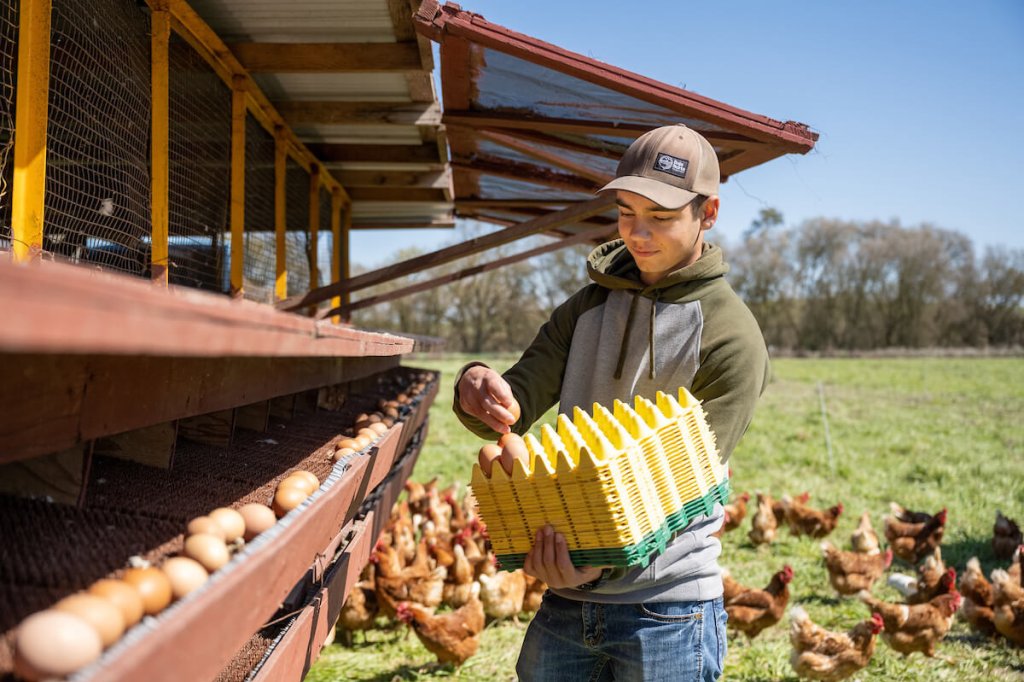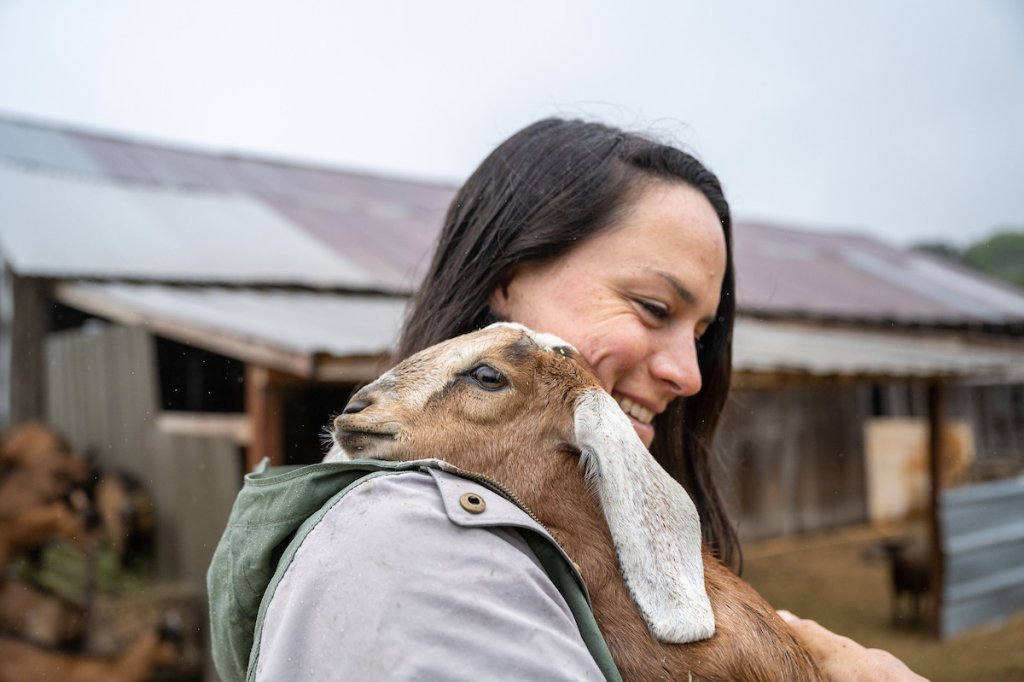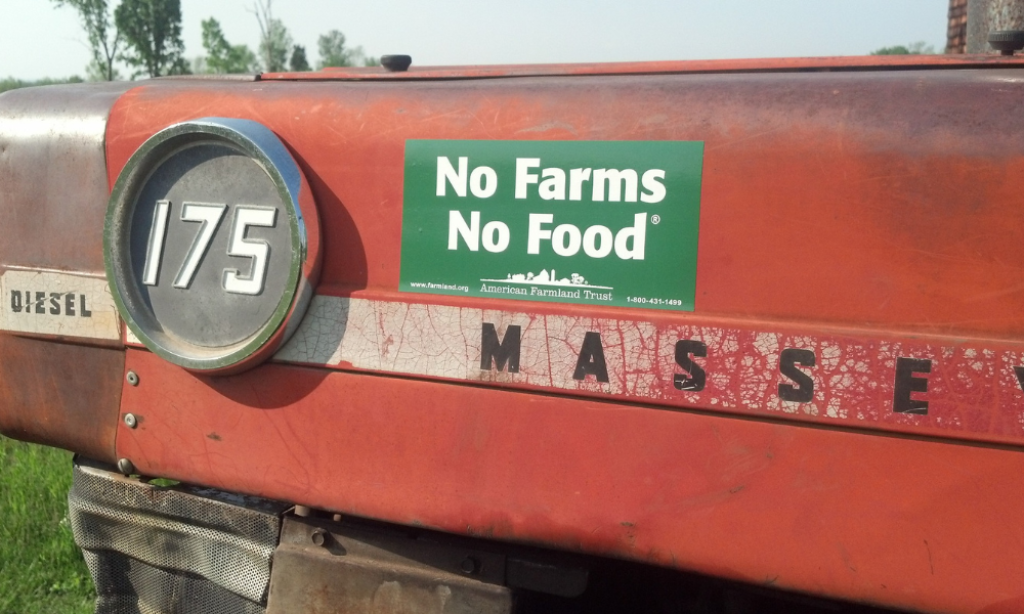What’s at stake when we pave over, fragment and otherwise fail to protect Virginia’s farmland from the disruptions of development?
American Farmland Trust’s new report demonstrates how developing farmland puts food security, the environment and our way of life in jeopardy.
5/20/2020, WASHINGTON, DC — Millions of acres of America’s agricultural land were developed or converted to uses that threaten farming between 2001 and 2016, according to “Farms Under Threat: The State of the States,” a new report by American Farmland Trust. The report’s Agricultural Land Protection Scorecard is the first-ever state-by-state analysis of policies that respond to the development threats to farmland and ranchland, showing that every state can, and must, do more to protect their irreplaceable agricultural resources.
“The State of the States” report shows the extent, location, and quality of each state’s agricultural land and tracks how much of it has been converted in each state using the newest data and the most cutting-edge methods. The Agricultural Land Protection Scorecard analyzes six programs and policies that are key to securing a sufficient and suitable base of agricultural land in each state and highlights states’ efforts to retain agricultural land for future generations. It offers a breakthrough tool for accelerating state efforts to make sure farmland is available to produce food, support jobs and the economy, provide essential environmental services, and help mitigate and buffer the impacts of climate change.
Virginia struggles to keep up with high population growth, the resulting pressures of development, its best lands succumb
Agriculture is Virginia’s largest private industry with nearly 3.3 million acres of ‘Nationally Significant’ agricultural land, or land best suited for growing food. The industry has an economic impact of $70 billion annually and provides more than 334,000 jobs in the Commonwealth. Virginia’s agricultural production is one of the most diverse in the nation. Many Virginia commodities and products rank in the top 10 among all U.S. states. These include leaf tobacco, 3rd; apples, 6th; grapes, 8th; peanuts, 9th; fresh market tomatoes, 10th. Livestock rankings based on number of head include turkeys, 6th in the nation, and broilers, 10th. In addition to its tangible benefits such as farm cash receipts and jobs, agriculture provides many intangible benefits like recreation, tourism, wildlife habitat, biodiversity, flood mitigation, improved water quality and soil stabilization.
Between 2001 and 2016, 340,000 acres of Virginia’s farmland were developed or threatened, nearly 120,000 acres of which were ‘Nationally Significant.’ Threats to land are also threats to the economy. This level of development represents enough land to generate $164 million in annual revenue.
Hots spots for development were around Richmond, Fredericksburg, Lynchburg and just outside the Capitol Beltway.
However, the threat is more than just urban sprawl. Virginia’s agricultural land is disproportionately threatened by a new, more insidious kind of development discovered by AFT through this research, termed Low-Density Residential, or LDR, land use. Roughly 80% of the land developed or threatened in Virginia fell into this category. LDR development is insidious because it is not always immediately visible to communities and policy makers and therefore has yet to provoke a policy response.
We all recognize urban sprawl, but LDR development is a big problem. It is where you see housing developments popping up in and around agricultural fields (not suburban, but exurban and beyond that), often large-lot developments. In Virginia, LDR development is seven times more likely to be converted to urban high-density land use than other agricultural land.
LDR land use compromises opportunities for farming and ranching, making it difficult for farmers to get into their fields or travel between fields. New residents not used to living next to agricultural operations often complain about farm equipment on roads or odors related to farming. Retailers such as grain and equipment dealers, on which farmers rely, are often pushed out. Farmers can be tempted to sell out for financial reasons, or because farming just becomes too hard in the circumstances. And lastly–but importantly–as older farmers near retirement they sell their properties, too often to non-farmers. This means that new and beginning farmers have a hard time finding land, threatening the very future of agriculture. More often than not, the land prices in these areas have been driven up by the encroaching development making it impossible for new farmers to afford to buy a farm.
Virginia fell in the second quartile on the Agricultural Land Protection Scorecard, ranking thirteenth in the nation as it struggled to keep up with development. Its conversion threat is higher than its response rate relative to other states. Virginia’s Purchase of Agricultural Conservation Easements programs, the Farmland Preservation Program and Virginia Land Conservation Foundation, could do more if they received adequate funding to keep up with the threat of development. Virginia has implemented important planning policies requiring local comprehensive planning, but again this effort is not keeping up with development. It provides property tax relief and matching grants through the Virginia Land Conservation Foundation and runs the publicly supported Virginia Farm Link and county Farm Link programs to connect farmland sellers with farmland buyers and utilizes Agricultural Districts, but lacks adequate State Leasing programs. Committed state action is an essential response to the loss of farmland and ranchland. Pursuing multiple approaches and linking them together is the most effective path.
“Virginia state and county planning and zoning staff, Virginia Land Conservation Foundation, Virginia’s United Land Trusts, and others have had incredible success in protecting Virginia’s treasured agricultural lands,” said Jamie Mierau, AFT Mid-Atlantic regional director. “But we face intense development pressure and so we will have to continue to work together to aggressively preserve our farmland and ranchland to keep farming viable and productive in Virginia.”
To sign up for a Farms Under Threat webinar on your state, click here.
For a brief summary of national results and connections with climate change, food security and the economy: National Media Release
##
American Farmland Trust is the only national organization that takes a holistic approach to agriculture, focusing on the land itself, the agricultural practices used on that land, and the farmers and ranchers who do the work. AFT launched the conservation agriculture movement and continues to raise public awareness through our No Farms, No Food message. Since our founding in 1980, AFT has helped permanently protect over 6.5 million acres of agricultural lands, advanced environmentally-sound farming practices on millions of additional acres and supported thousands of farm families.



